Saturday, February 28, 2009
Why I am a purist
As I got older, I started getting a little pickier about my books. There were some tropes that seemed ever-present in fantasy specifically that bugged me to no end, the handsome hero swinging his phallus replacement around to protect the fragile but oh so beautiful princess from being touched. If I was lucky, the fragile princess would have power of her own, but it was almost inevitably magic of some kind, which allowed her to stay on the fringes of any battle and usually was the excuse for her weak constitution. Even female heroes would end up saved by the man yet again, regardless of her own strength.
Eventually, my mother (who can be seriously awesome) introduced me to Terry Goodkind's Sword of Truth series. This series seems to fall victim to some of the usual tropes at first, but very quickly it is revealed that not all is as it seems in that regard. The series is full of strong female characters, and by that I don't mean "Strong Female" characters, but strong characters that happen to be female. Its not a perfect series, but it does amazingly well in the gender department. Goodkind displays an amazing depth of insight into female perspectives, experiences and realities.
Can you imagine my joy when I found out they were making a TV series?
Absolute. Pure. Bliss.
Then I watched it.
I've read Backlash, I should not have been surprised. I should have expected that the entertainment industry would sap all individual personality from the female characters and insert tired old tropes about how women "really are." It doesn't matter if the character is essentially in charge of an entire council of nations and is the highest authority in the land. Underneath it all shes just a weak little girl who needs men to save her. She still has her amazing power, but now using it ONCE makes her faint like a delicate fucking wilted flower!
Additionally, the racial characterization is unbelievable. Why, pray tell, is the one character which was written with a specific speech pattern ie "I am" becomes "I be" (meant to indicate her native language's grammatical structure conflicting with the language she currently speaks) cast as a woman of color? Especially when this character was not originally written so? To make it worse, shes a sorceress who lives in a hut full of bones, and uses bones to ward off the underworld. Cue the "mystical POC/ voodoo preistess" stereotype. Tia Dalma anyone?
Theres more, but frankly, it isn't even worth addressing in some ways, cause we have heard it all before.
In all honestly, I wish I could even be anything other than bored and disappointed.
In short, don't bother with "Legend of the Seeker" As usual, the Western entertainment industry took perfectly good source material that actually portrays a complex world and boiled it down to the things that make white guys feel most comfortable.
Monday, February 23, 2009
One more note
Slide...
There is one thing though, that I stand by whole heartedly and will never compromise on, that I am accused of regularly, either overtly or covertly, and that is being confrontational. In this vein, I have been told that I'm too militant, that I'm too angry, that I care too much, that I have a chip on my shoulder, that I'm too mean to listen to and that I don't know how to pick my battles.
I actually get that last one a lot, that I have to learn how to pick my battles. I don't know how to just let some things sliiiiiiiiide.
I tend to hear this complaint when I am making the person/people I am with uncomfortable for various reasons, usually tied either to the fact that I am challenging their perspective directly or I am annoying/angering someone else in the situation and that worries and/or upsets my friend(s)/family member(s). Now, in order to be fair to my spouse, this sentiment is not always meant in the same way. When zie says it, zie also qualifies that zie thinks I am over-extending myself and zie doesn't want to see me crash into a depression or exhaustion cycle. I know that some of my family sees it similarly. Even in those cases though, there is one concept that underlies every single motivation for someone telling me to just "relax." There is always the implication that whatever I am speaking about or against is just not worth the effort of being...excited about, angry about, worked up, or even just caring about.
*snort*
My question always ends up being why. Why should I let it slide? Because I can't change it? Because you don't care about it? Because its easier to ignore it? Because you would rather coddle someone who says something ignorant?
I have been told not to confront someone who casually use the word "faggot" to describe someone because everyone just wanted to get on with the chat we were having. When I called him out though, the majority of the people in the chat were behind me. He eventually threw a fit and left, calling me a troll in the process. (LOL IZE NOT TROLLIN' ROFL) My friend who ran the chat tried to get me to stop calling him out on his abusive language to avoid discomfort for this one jerk with a bigoted perspective despite the fact that the vast majority of the group was uncomfortable with his presence and his language. So why did his comfort trump all of ours? Why is kicking up a fuss in these situation looked down on, while someone who is using language that actually contributes to lower quality of life for actual people is supposed to be just left alone? Why is reminding people of basic rules of civility that we all should have learned in kindergarten a shameful act but insulting others protected as sacred opinion?
Underneath this and a laundry list of other situations like it, continues to flow that basic idea: some issues are not worth fighting for. ignore it and it'll go away. You are just one person, you have no real power. Submit to it cause its going to happen anyway.
I say FUCK THAT. Yeah, nothing will change if you sit on your hands and say nothing about it. These things don't just fade away on their own. How many times in history has something changed because the group of people negatively affected sat quietly and politely waited their turn? How many institutional oppressions have been solved by just letting it sliiiiiiiiiiiiiiiiiiide? And before anyone starts, yes, calling out individuals is part of addressing institutional oppression. These institutions are built and informed by our society and have various cultures issuing from them. One of the ways to combat it is to let people know that this culture they have accepted is damaging to real people and that these people have the right to live their lives free of this damage. What happens when you call out bigots? They learn that their behavior is not accepted nor encouraged by everyone. What happens when we stay silent? they think there is nothing wrong and that people agree with them.
Silence changes nothing. Silence is one more way to be complicit in these on going structures. Yes, we must choose our battles. I have chosen mine. My battle is not to let hatred against me or those I love pass by unremarked upon. You think my battle doesn't matter? Keep it to yourself.
Sunday, February 22, 2009
Quick Hit: Misogyny Where You Least Expect It
I love StumbleUpon. You want to lose a whole night of productivity? StumbleUpon. I have found some awesome sites and amazing images through this lovely concept.
Unfortunately there is no way to request things that are not written by idiots who say sexist things.
If you follow the link, you will find a blog post about the worlds deepest pool, which looks amazingly awesome. One problem though, the sub-title of the post.
The Deepest Swimming Pool In The World
The last date you take your cheating girlfriend on.
Anyone else see the problem here?
...
...
No?
Ummmm...is it absolutely necessary to advertise an amazing place with the suggestion that its a great place to kill a woman who cheats on you?
In a world where the vast majority of murdered women are murdered by their significant others, you really thought this was appropriate? Or worse, a fun thing to joke about?
Well I know that is exactly what makes me think someone is edgy and cool, is their willingness to joke about drowning bitches who dare to fuck someone other than them. Way to go there Skippy.
Saturday, February 21, 2009
Fame and victim blaming
Cue the inevitable cries of "What did she do to make him act like that?" There is unsupported conjecture that she cheated on him and/or gave him herpes being give as justification for his actions, or the usual suggestions of "but hes so NICE!" that are being offered as proof that the bitch must be lyin'.
I will never understand how someone can rationalize the idea that because you like someone's artistic expression that you know who they are and how they would act. Famous people are still PEOPLE and some people are assholes. Just because you like his music/think hes pretty/hate her for her fame/looks/relationship with him, does not mean you know fuckall about who they are.
No, I don't want to hear any, ANY justification for domestic violence. I have heard that he was abused by a child, and if it is true then it is awful that he was. This does not excuse violence he commits in any way. Aileen Wuornos was sexually and physically abused throughout her life and no one excused her for her crimes.
As far as the incursion into Rhianna's privacy in this case, I get so enraged that someone not only released her name, which is against law enforcement protocol, but a motherfucking picture of her after the attack that it is all I can do not to fucking walk to LA to verbally tear the shit out of whoever did that and their boss until this person is unceremoniously and publicly fired and shamed. I will instead quote Uppitybrownwoman:
I don’t want to open up any dialogue right now. I don’t want to teach you. I don’t want to explain to you how women of colour are shoved in all directions when it comes to violence against women. I don’t want to teach anyone about sexism and racism in the media. I don’t want to tell you about my experiences so that you can satisfy your voyeuristic curiosity that we have been trained to have. I don’t want to make any woman, WOC or not, into a model victim. I don’t want to tell you why it’s wrong to expect that of any survivor. I don’t want to have to argue again and again why it is downright bullshit to try to take away agency from the survivor. I don’t want to explain that “the personal is political” doesn’t mean no one has a right to privacy.
I want to yell. I want to scream. I want to rage. I want to extend a hearty ‘fuck you’ to a lot of people.
I don’t give a fuck how your life has been fundamentally changed by seeing a sensationalized photograph of a domestic assault survivor.
I don’t give a fuck about her fame.
I don’t give a fuck that you want to see it too.
I don’t give a fuck that you think she has no right to privacy because she’s a celebrity.
I don’t give a fuck how lucky you now feel to have never experienced intimate partner violence just because you’ve seen it.
I don’t give a fuck that you can see the ‘upside’ of this because it’s “raising awareness.”
I don’t give a fuck about you making her into an example.
I don’t give a fuck about what you think she should and should not do about her life.
I don’t give a fuck about her abuser’s career.
I don’t give a FUCK if you think she deserved to be abused, or to have her photos spread around like a fucking Christmas card.
Fuck the people who have turned this into entertainment.
Fuck the people who have turned this into an after-school special on VAW.
Fuck the people who published it on news sites and displayed it on television (I am looking at you Entertainment Canada).
Fuck the people who posted it on their blogs, their journals, their Facebooks, MySpaces, and other social networking sites so that EVERYONE else can see it.
I give a fuck about her dignity and I am yelling about it. I give a fuck about her choices that only SHE has a right to. I give a fuck about her life. I give a fuck about her rights. I give a fuck about her privacy. I give a fuck about her, so why don’t you?
This woman and her injuries are not gore porn for anyones amusement. No one has a right to see these photographs just because she makes a living in the public eye. If you need to see a picture of a battered woman to "show you the REALITY" of domestic violence, I suggest instead volunteering at a local homeless or battered women's shelter or just fucking right the hell off. If it takes something like that to "prove" to you that shit like this is a problem, then you have some serious soul searching and questioning of your humanity to do.
Fuckers.
Blog Note
You want to say something here? Put a name to it. Especially if you are going to try and make specious "logic" arguments about rape or try to misrepresent what was said. I don't care if you use your brain when commenting here (as I know most who comment do) but you are going to own your words, even if it is behind a pseudonym, or not comment at all. At the very least take a couple of seconds, expend some mental energy and come up with a name.
Thank you.
Carry on.
Saturday, February 14, 2009
Defenders of marriage
Thursday, February 12, 2009
Same Shit, Different Day
Please stop it with the judgments of Nadya Suleman. I am so sick of hearing about this that I could puke. Asking if she should be "allowed" to give birth to octuplets when she already has six children is an irresponsible question. Her body, her life and her choice. So they may end up on some sort of public assistance. Who the fuck cares? no really, who cares? Some of y'all think you shouldn't have to pay for her choices because you think they are irresponsible. I get it. I also think thats a pretty fucking cold Regan-esque thing to say. These are children, they are here and they are alive, and they deserve a chance at a decent life, regardless of how desperately you want to judge their mother. Unless you really think your self-righteous posturing about how this woman is a leech, insane or worse is more important than feeding children who haven't done anything but be born. And seriously, Yahoo news...the whole family may end up costing a whole 1.3 million dollars as a scare tactic? That means one dollar from a million taxpayers. How many taxpayers do we have in this country, hmm? Purposefully inflating that number to feed into the welfare wank? THATS fucking irresponsible.
Honestly, judging women for their reproductive choices is so fucking old-meme I don't even know where to begin. Besides, if she were a white woman with a husband everyone would be cooing over the pwecious widdle babies and TLC would be falling all over itself to give her a TV show and years worth of free shit.
Just cut it the fuck out already.
love and kisses,
me
Wednesday, February 11, 2009
Veiled Contempt-Part one: "Hijab" (aka The "Mythnomers and Impervections" edition)
So, we are finally gonna start with this conversation, mainly because it seems to be the hugest issue that your average non-Muslim westerner will bring up regarding women in Islam. This took forever to actually put together, so pay attention.
Welcome to the first section of Part One in my Veiled Contempt series.
The veil.
This particular subject in itself is huge, and how it is addressed is rarely unproblematic for the people actually faced with the prospect of wearing something that has so many shades and degrees of meaning from place to place.
Very often, at least in a good deal of the popular culture that I have seen, the concept of veiling is either painted as absolutely oppressive, all the time, no matter what, or as an object of ridicule.
This part of this series will serve as a sort of primer on basic veiling names and facts, as well as dispelling some myths about the practice itself. I will add a disclaimer, this information should not necessarily be considered comprehensive. It is based on a few years of research on my part but there is a huge wealth of information on this topic. This piece barely scratches the surface.
First thing that must be understood: not every Muslim women veils. Not every predominantly Muslim country requires it either. Most don't require anything in the way of head covering for women, in some Muslim countries the practice is discouraged or outright banned in certain areas and even in the countries where it is required, veiling as it is recognized by non-Muslim westerners, and even some Muslim westerners, is a largely urban and recent phenomenon that has a huge variance from country to country, ethnic group to ethnic group.
Next thing that must be understood: there are many different variations of veil, all of which have their own name, and their own history, locality and meaning.
The headscarf, or hijab, is the most ubiquitous symbol of female Muslim identity to outsiders. There is no doubt in your mind when you see a woman wearing any one of the possible variations of the veil as to how this woman identifies herself. However, there are a multitude of questions as to why a woman would identify herself so openly in this way. In response to that, there is a multitude of reasons for wearing it, dependent on factors such as location, culture and interpretation of religious texts. Depending on where the woman is currently located, and where she is originally from, the veil can have many meanings, many purposes and many “why’s” attached to it. In today’s world, the veil has significant social, religious and political implications.
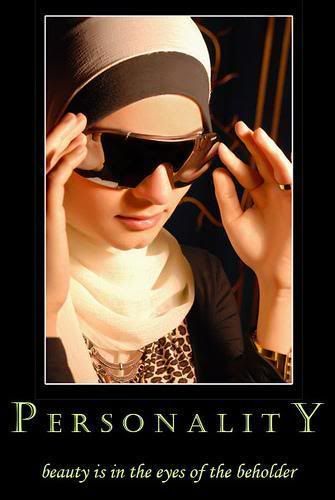
There are different variations of the veil, each of which has a slightly different implication. To list them fairly quickly, there is the hijab or headscarf, which can be found throughout the Middle East as well as in Turkey; there is the jilbab, often associated directly with the hijab; the niqab, which is not only the jilbab and the hijab but also a covering for the face which leaves only the eyes showing; the chador, or “sheet” which is a large piece of fabric, or a cloak that is wrapped around the body and head and is found mainly in Iran and Pakistan; the burqa, which is usually a large tent-like garment with a screen to allow the wearer some vision, and is found mainly in Afghanistan; and lastly the abaya, a flowing garment which is normally black that covers from the head to the ankles and can be found all over the Middle East. The style which is used to wear and decorate the various different methods of veiling can be an indicator of regional origin. The niqab can be as simple as a black outer garment worn when one goes out, to an elaborately decorated headdress made with leather and sewn on metal decorations. The simpler version generally indicates an urban dweller, whereas the more elaborate niqab is an indicator of a smaller, more rural village dweller. The style in which a hijab is wrapped about the head is also an indicator of regional origin. Hijabs in Egypt are very different from hijabs in Turkey.
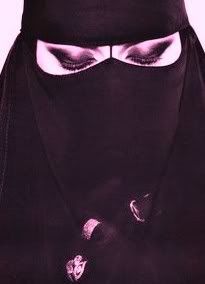
The obvious meaning of the veil is to establish visual evidence of differentiated roles for males and females within Islamic culture. The actual source of the veiling tradition pre-Islam is unclear, but there are many theories. One theory is that women would cover themselves in the desert to prevent the dust and sand from ruining their clothing, or to prevent them from being made a target for raiders. In a strictly Islamic interpretation, it indicates something quite different. There are clothing and headwear prescriptions for both men and women within Islam, but they have one major difference. In every mention of men covering their heads it is with some reference to the divine. Men were to cover their heads to show a relationship to God, whereas women were to cover their heads as an indication of separation from certain aspects of social interaction and as an indication of modesty.
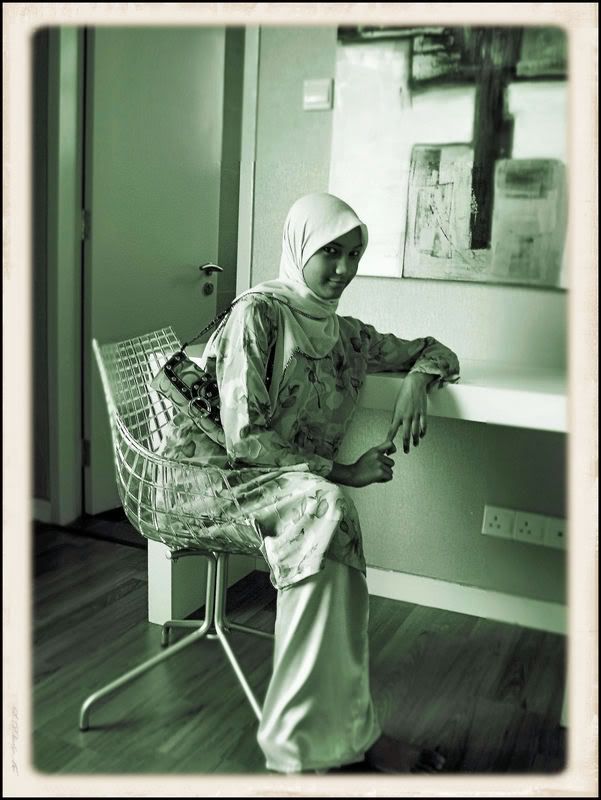
There are religious writings that have been used by many different groups and individuals to enforce a version of the veil on women. Two Surahs specifically indicate that a woman should cover. Surah An-Nur (24:31) advises women to “draw their veils over their bosoms and not display their beauty except to their husbands, their fathers, their husband’s fathers, their sons, their husband’s sons, their brothers or their brother’s sons or their sister’s sons, or their women or the slaves whom their right hands possess or male servants free of physical needs or small children who have no sense of the shame of sex.” Essentially, this Surah dictates that women should only show their “beauty” to their husbands or to those who are ineligible to be their husbands. This Surah has been used to not only make the argument for veiling, but to make the argument for nothing more than modesty. It has been taken to the other extreme as well, and has been used to justify extreme examples of veiling, which will be discussed later.
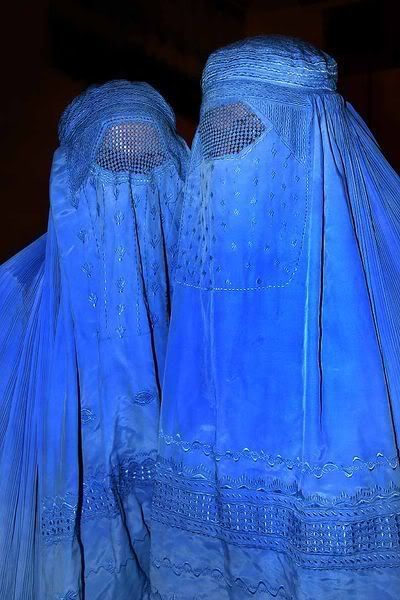
There is also Surah Al-Ahzab (33:59), which delivers a more direct command: “O Prophet! Tell thy wives and daughters and the believing women that they should cast heir outer garments over their persons [when abroad]: that it is most convenient that they should be known [as such] and not molested: and God is Oft-forgiving, most merciful.” In this passage, the word “outer garments” used here is jalabeeb, plural of jilbab, which is a long gown covering from the neck to the ankles. This Surah is also used to justify extreme veiling.
The current trend of young, second generation Muslim women in western countries beginning to veil when it had not been a well observed practice in their families has been attributed to these two Surahs, the translations of them in English and the interpretations thereof. Many of these young women are interpreting veiling as fard, or religious duty. This has become more important in recent years as the popularity of multiculturalism has expanded. There has always been an attitude of assimilation for immigrants to America due to how recent immigrants ahve been and are treated as "other" and marginalized, and in the late 80’s/early 90’s it wasn’t seen as very “cool” to be anything other than mainstream, so immigrants to places like north America were more likely to try and assimilate in order to gain social recognition and reduce the “otherness.” In the last decade or so being ethnic in some way has become more fashionable and therefore more desirable. With the idea that asserting ones ethnic identity is a way of gaining social status, it has become important to some women to assert a specific part of their identity. Since it is a bit more difficult to assert a specific ethnic identity and still maintain a fairly decent social circle without being deemed racist, it has become easier to bring a religious identity more to the forefront and to still be inclusive. It has even gotten to the point where instead of trying to blend into the usual social hierarchies in school, or in public, it is easier to carve out a specific social niche in which everyone who is part of the group shares some visible evidence of their identity. This particular evidence has become so popular that there is a fairly brisk market for these culturally specific garments and businesses have sprung up amidst the demand.
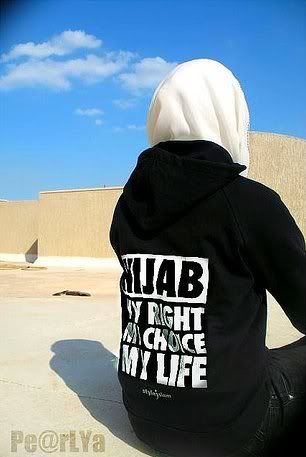
The veil also has social implications, which are very dependent on the location and culture of the veiler. The most common social implication of the veil is the protection from harassment. Many women who choose to veil have found that by asserting their identity as a pious Muslim woman, they are either left alone when it comes to unwanted sexual advances, or they are able to take a higher moral ground because of it. In my own experience of wearing a veil her on the streets of Philadelphia, I did notice a difference in the way I was treated by men. I found that I was stared at less, and the cat calls that have been a fact of my life since the onset of puberty had all but stopped. It has been stated in several different studies on the choice to veil that many women witnessed a reduction in how much they had to deflect unwanted advances once they assumed the veil.
However, this does not always apply. In a conversation on NPR that I had with Azar Nafisi, the author of Reading Lolita in Tehran, I asked her about this in regards to the forced veiling of Iranian women. She said that while that was used as the official justification for enforcing the veil, in her experience it only made street harassment worse. According to her, this was mainly because the assumption of the veil was compulsory and had many different veins of logic behind it, not the least of which being the assumption that women were inherently a temptation to men and had to be covered to protect men from their “seductive powers.” This mindset, even under the guise of protecting the women, only served to put them at greater risk. Mrs. Nafisi emphasized that the important part of this was the choice to veil. When veiling no longer becomes a choice and is compulsory, it loses any moral high ground or credibility because it is no longer a sign of the individual woman’s piety, but a social mark of inherent licentiousness.
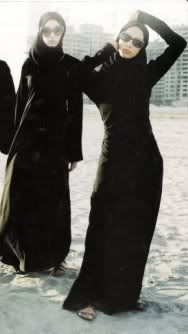
Another social implication of the veil is the reactions of western non-Muslims to women who veil in their midst. There are a great many assumptions about the veil and the purpose of it in the west, and there have been some recent negative reactions to veiled women in supposedly “liberal” countries.
The first and most obvious example is the French ban on obvious religious clothing or symbols in public schools. This ban states that religious headwear is not allowed in a publicly funded institution. The argument is that because France is so secular, and assumes that a great deal of its citizens are also secular, they do not want to be seen as endorsing any particular religion. There is also the argument that the veil is something that is forced on women by their fathers, husbands, or other family members and the government has to be willing to protect them from that. This is an understandable desire, however, the premises that it is based on are false. The vast majority of women who live in western countries who veil do so by choice. Their families often resist them in their decision to veil, as a part of not wanting to stand out as ethnically different and because of the implications of identifying openly and visually as a Muslim in a world where there has been a great deal of violence attributed to Islamic fundamentalism and where many people assume that “Muslim” and “terrorist” are synonymous.
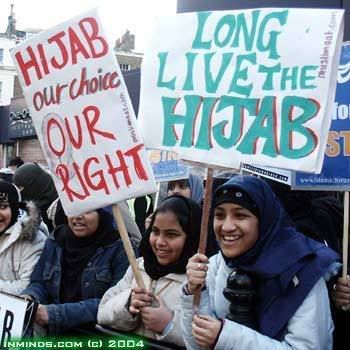
Another case is Britain. A few years ago a British elected official began to insist that if any of the veiled Muslim women in his constituency wished to speak to him, they would have to remove their face veil. He called it a “visible sign of difference” and insisted that he would not accept people trying to separate themselves from the rest of the world. If they wanted his attention, they had to remove their veils. It was obvious that he had no idea what he was asking and had no idea about the significance of the veil. He too, assumed that it was something forced on these women by possessive husbands and exclusionary cultures. It did not cross his mind that perhaps this woman chose it for herself and sees it as a sign of her devotion to God. He assumed, like so many others, that he was “saving” these women and giving them a chance at being “free.” Quite often, as I mentioned earlier, veiling is chosen. There are only a few countries that require women to veil and even in those countries there are rural areas where it is not observed as extremely as it is in the city centers. Some cultures that have a large Muslim population do not allow women to veil, so when they come to a western country that prides itself on freedom to worship, they choose to worship in a way that was denied them before. If a woman is from Indonesia or Turkey and chooses to veil when in a western country, this is most likely because in her country of origin, she is either socially discouraged, or outright denied the choice.
Possibly the largest implications connected to the veil are the political implications. Politically, the veil can function in many ways, but the ones that I will discuss here are the uses of the veil as a sign of either obedience or defiance of the government, and the veil as a sign of protest against the West.
There are at least three major countries in the Middle East that strictly enforce a veiling policy for their female population, Iran, Afghanistan and Saudi Arabia. Each of these countries policies has their roots in various political and religious justifications. In Saudi Arabia, the niqab is the required form of veiling for any time that a woman leaves her home. The restrictions go much deeper than that, and extend to women’s ability to travel alone or obtain anything without the permission of a male guardian. The source of this proscription for veiling is the very conservative Wahabi Islam that is integrated with the power of the monarchy. In Afghanistan, the burqa is the proscribed form of the veil. In the past this was instituted by the Taliban which went as far as to prevent women from going to school, and would have morality police that would beat women and punish their husbands if their veiling was deemed insufficient. There is still an on-going issue in Afghanistan regarding the behavior of women that some groups find to be "impious," leading to horrible actions, like throwing acid on women who dare to attend school. Finally, in Iran, the chador was introduced as a required dress for women whenever they left their homes. This began as part of the movement that eventually led to the Islamic revolution. It was considered to be a way of rebelling against the influence of the west on Iranian culture and the sexualization of women for profit. It later became a way of showing ones obedience to the government. If a woman is not veiled properly, she can be arrested on indecency charges and be given a years-long prison sentence. The severity of how this is enforced waxes and wanes depending on current political tides.
These three locations have a few obvious things in common, the first of these being the government enforcement of dress using the excuse of “morality,” the second being the penalties for violating the dress code. All three use the previously discussed religious texts to justify these policies. The second two have one more thing in common. In both Iran and Afghanistan, these policies came as a reaction to the increasing encroachment and interference of the west on these specific countries.
On the flip side, there are countries that have outlawed the veil in the past and continue to actively discourage against it now. One is Turkey, a country that is based in Ataturk’s vision of a completely secular state. Ataturk himself put legal limits on religious dress during his lifetime. These laws have been revoked for the most part, but one is still hard pressed to find a woman in a position of political or social power in turkey who actively veils in public. Here have also been several movements in Egypt to block the veil, and in response veiling has grown as a sign of political protest.
In conclusion, it is obvious that with the complexity of the practice of veiling it is foolhardy at best and completely ignorant at worst to make assumptions about a woman who veils or doesn’t and about her impetus for doing so. As far as my personal opinion on the practice, I feel that it can be an important form of identity assertion and a way to express oneself socially, politically and religiously. That being said, I support the practice, provided it is a choice. If it is forced it loses all meaning except the political and that does nothing but cheapen the religious and cultural reasons for choosing it. In the flip side of that argument, forcing a woman to remove it when she does not wish to shows the same disregard for her agency as forcing her to wear it does, and as a double strike, is able to be couched in supposedly progressive rhetoric which, under the surface, has very little to do with "progress" and has everything to do with control. In the next section of this series I will address a deeper analysis of this practice, and the western equivalents thereof.